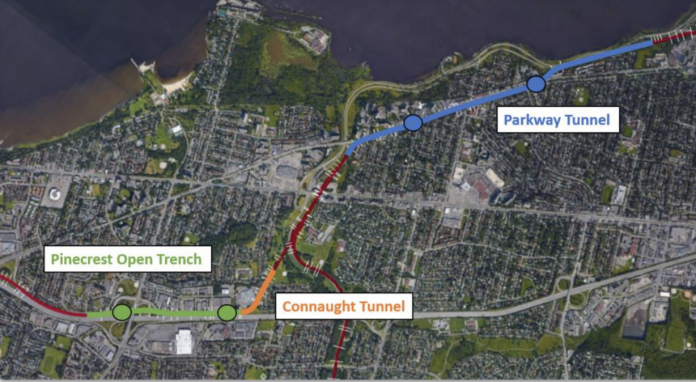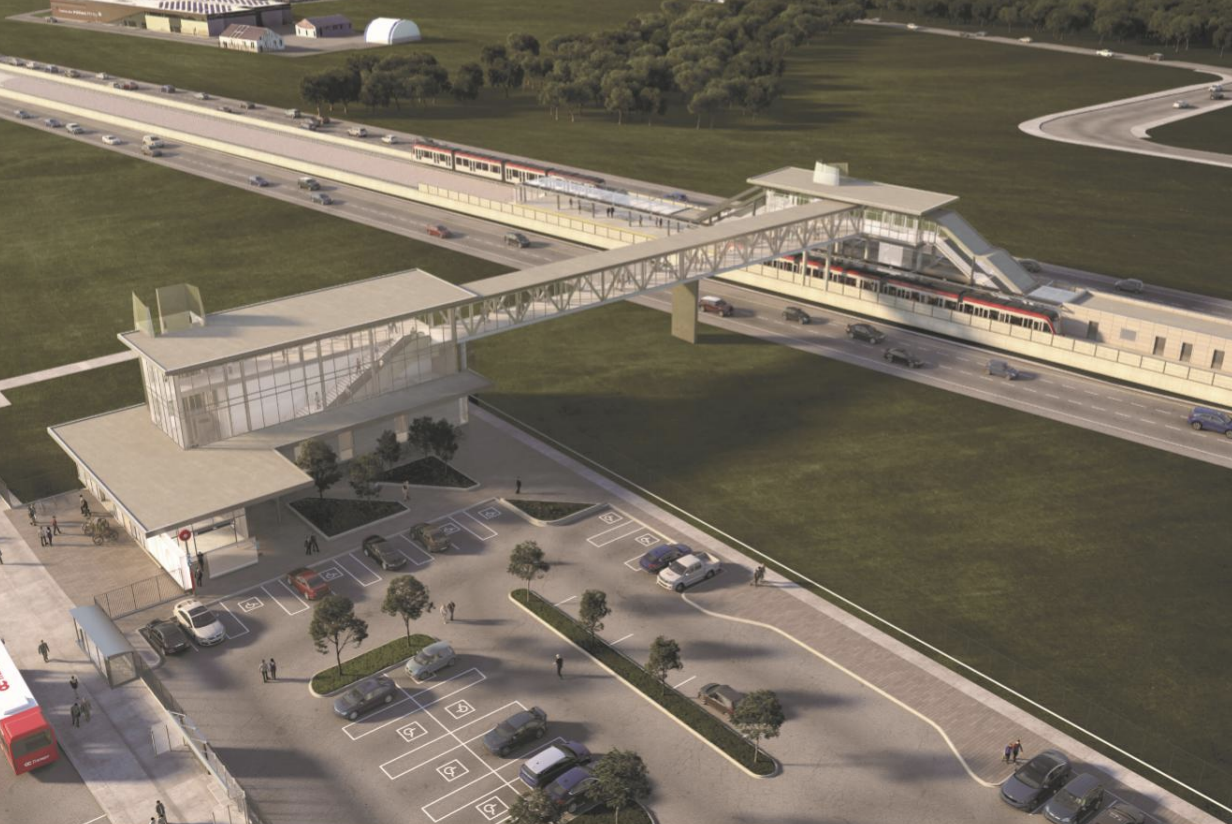
Ottawa’s second-stage Light Rail Transit (LRT) project will cost more than $1 billion than its original budget, meaning that the projected $4.7 million cost will require at least $700 million in additional municipal debt financing.
City officials revealed these numbers as they announced on Feb. 22 the selected contractors for what will be Ottawa’s largest capital infrastructure project.
The East West Connectors consortium, led by Vinci Group headquartered in France, and Omaha-based Kiewit, has offered to build the east and west extensions to the Confederation LRT line for $2.57 billion, about $600 million greater than the amount originally projected by the city. Other participants include WSP Canada and Hatch Ltd., responsible for design and engineering work.
Meanwhile, TransitNEXT, wholly owned by SNC-Lavalin Ltd., will build the Trillium Line extension to Riverside South and the Ottawa International Airport.
The Ottawa LRT second stage construction methodology
Construction is scheduled to start this summer and be completed by 2025, about two years later than originally projected.

City documents say the project, resulting in the construction of 24 new stations and 44 km of track, as well as extensions and expansions to existing Trillium Line stations, plus new maintenance, repair and storage facilities, will create nearly 27,000 person-years of employment, or the equivalent of more than 1,000 full time jobs.
At the technical briefing to announce the winning bidders, construction schedule and cost, some city councillors, notably Southgate Gloucester Coun. Diane Deans, expressed concerns about the significant cost escalations, additional municipal debt, and requirement that the city councillors approve the project within weeks – even as they mist review and approve the city’s 2019 operating budget.

However, Chris Swail, the city’s director of O-Train planning, said the city cannot wait to sign off on the new contracts, or the costs will likely be even higher. “The timing is unfortunate,” he said. “We need approval from council to execute the agreements and the provincial and federal partners, by the end of March,” he said. If that happens, the “pricing holds, otherwise, costs are to go up.”
Deans said she is uncomfortable with council needing to “make snap decisions on a hugely costly project.”
LRT station descriptions and technical overview
Swail said that federal and provincial contributions are expected to remain as originally budgeted, at $1.2 billion each – and Ontario’s provincial Conservative government is expected to sign off on its commitment to the original Liberal financial commitments within weeks.
Deputy city treasurer Isabelle Jasmin asserted that the city is within guidelines regarding the additional borrowing required. “The debt servicing is within the provincial level.” she said.
Nevertheless, the required debt financing will increase from $4.3 billion to $5 billion if the new contracts are approved.
Swail said in his presentation that the new project, when competed, will cover 64 kilometres, and put the great majority of city residents within five kilometres of a transit station.

”We’re receiving excellent value for the money, even with extensive additions and the additional scope we have included,” he said. “There was stiff competition on the procurement, and the excellent price represents real value for taxpayers.”
With the Stage Two extensions, the system will have the capacity to move 24,000 people per hour through the core. “There’s a huge leap in transit capacity.”
However, Deans and other skeptics expressed concern about the projections, noting that the existing Stage 1 Confederation Line isn’t open yet, and there appear to be further delays on the scheduled launch of the as-yet-unproven trains.
Others expressed concern about the role of SNC-Lavalin in the Trillium Line extension, given the company’s participation in the delay-ridden Stage 1 contract and the company’s ongoing political corruption controversies (though there is no suggestion of any corruption in the Ottawa tendering process).
Swail said the city has learned from the delays in the first phase, and developed new notice requirement penalties, along with a hard final deadline with additional penalties. He said the city is not concerned about the possibility of financial problems at SNC-Lavalin, as the project will be covered by sureties meaning that the city will be made whole if for some reason the contractor defaults on the work.

The project is undeniably extensive, with many details, and work hours for engineers, architects, contractors and sub-trades, and will likely fuel the local construction industry’s economic health.
“This is twice as big as the current Confederation Line project, and is the largest project in
Ottawa’s history, said Michal Morgan, the city’s director of rail construction.
The work includes extensions of the western Confederation rail line to Moodie Drive, with an extension to Algonquin College. The Eastern line will be extended to Trim Rd. Meanwhile, the existing O-Train rail line will be extended south from Greenboro to Riverside South, with a spur line serving Ottawa International Airport. There are several associated non-transit projects infrastructure bundled into the work to facilitate convenience and construction efficiency.
The final stage of the planned transit system extension would include a 12 km extension to Stittsville, 10 km to Barrhaven and a 1.5 km eastern link to Gatineau over the Prince of Wales bridge. There isn’t a date set for the start of work on this stage of the transit system.







